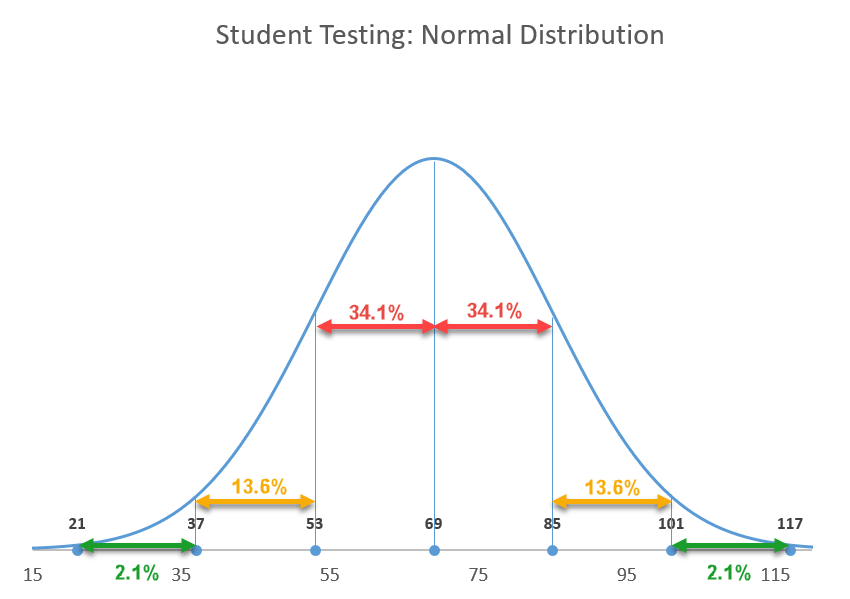Go to the Insert tab and click on Recommended Charts. First we will take a random data. Inserting Gauss Chart in Excel With so prepared data Select the columns and the Series 2 and insert the normal distribution scatter plot with smooth lines. Excel also allows almost unlimited chart customizations by which you can create many advanced chart types not found in Excel. Because NORMSDIST 0True always returns 05 GAUSS z will always be 05 less than NORMSDIST zTrue. Select the X Y Scatter and you can select the pre-defined graphs to start quickly. From the histogram you can create a chart to represent a bell curve. To create a sample bell curve follow these steps. For example if you want to read some data which is located in the cell range from B2D10 from the first sheet of a file named my_datasetxls then you would enter. Ultimate Excel Charting Add-in.
A gauge chart or speedometer chart combines a Doughnut chart and a Pie chart in a single chart. Ultimate Excel Charting Add-in. The above chart on the right shows the Gauss Function for values of z between -6 and 6. Normal Distribution Graph Example 1. Select the Range A2B92 Data column and Distribution column and click the Insert Scatter or Scatter and Doughnut chart in Excel 2013 Scatter with Smooth Lines and Markers. Here we add a normal distribution curve to an existing histogram so you can compare your data to a normal distribution with the same mean and standard devia. Select All Charts while inserting the chart. Where A is the amplitude μ is the average and σ is the standard deviation. This is what the spreadsheet looks like. Because NORMSDIST 0True always returns 05 GAUSS z will always be 05 less than NORMSDIST zTrue.
Here we add a normal distribution curve to an existing histogram so you can compare your data to a normal distribution with the same mean and standard devia. The above chart on the right shows the Gauss Function for values of z between -6 and 6. Select the X Y Scatter and you can select the pre-defined graphs to start quickly. This will give you a bell curve in Excel. To find the Gaussian fit in Excel we first need the form of the Gaussian function which is shown below. For further details and examples of the Excel. Ultimate Excel Charting Add-in. Inserting Gauss Chart in Excel With so prepared data Select the columns and the Series 2 and insert the normal distribution scatter plot with smooth lines. Select the Range A2B92 Data column and Distribution column and click the Insert Scatter or Scatter and Doughnut chart in Excel 2013 Scatter with Smooth Lines and Markers. To create a gauge chart execute the following steps.
Insert the Scatter with Smooth Lines chart. Let us take values from -3 to 3 in column A. Click on the Data Analysis Using Excel link and then in the right pane click on Normal Probability Plots Using Excel 5-page 43KB PDF or here at Jon Peltiers site Try the Probability Chart. Select the X Y Scatter and you can select the pre-defined graphs to start quickly. Because NORMSDIST 0True always returns 05 GAUSS z will always be 05 less than NORMSDIST zTrue. If we want to determine these coefficients from a data set we can perform a least-squares regression. If you want to load or read numeric data from an Excel file into GAUSS you need to use the function spreadSheetReadM. We obtain the following graph. After Microsoft Excel generates a set of random numbers you can create a histogram using those random numbers and the Histogram tool from the Analysis ToolPak. Now you can change the chart title and adjust the axis if you need.
The STDEV and STDEVS calculate sample standard deviation in Excel. From the histogram you can create a chart to represent a bell curve. Select All Charts while inserting the chart. 1 GAUSS -5 2 GAUSS 0 3 GAUSS 01 4 GAUSS 25 Results. After Microsoft Excel generates a set of random numbers you can create a histogram using those random numbers and the Histogram tool from the Analysis ToolPak. Here we add a normal distribution curve to an existing histogram so you can compare your data to a normal distribution with the same mean and standard devia. To create a sample bell curve follow these steps. If you are in a hurry simply download the Excel file. Ultimate Excel Charting Add-in. Because NORMSDIST 0True always returns 05 GAUSS z will always be 05 less than NORMSDIST zTrue.
